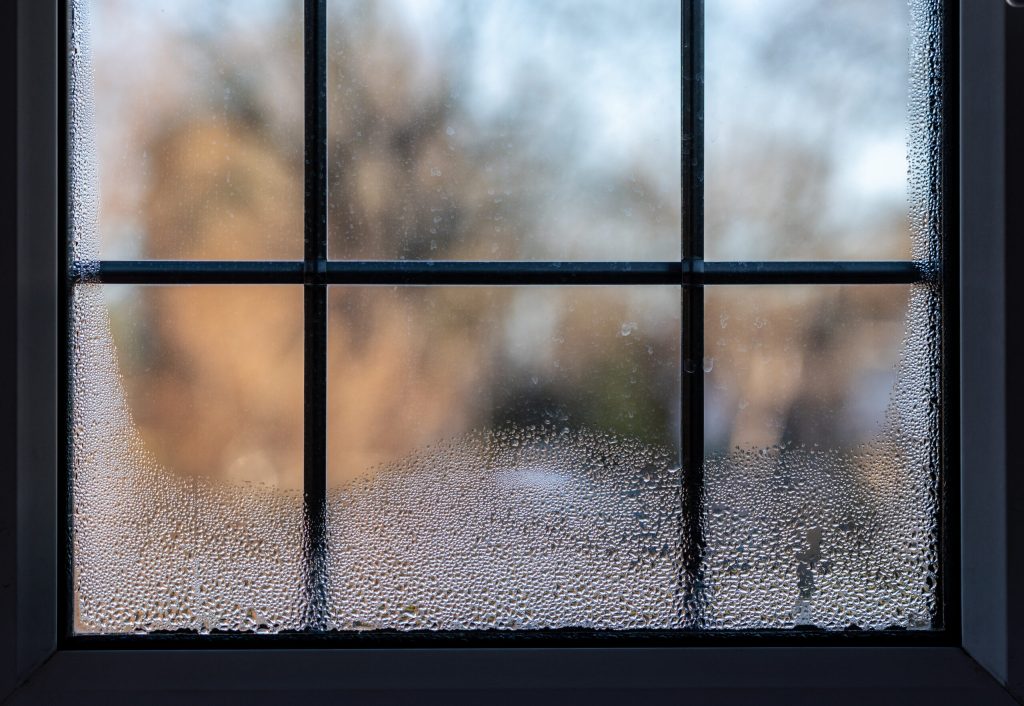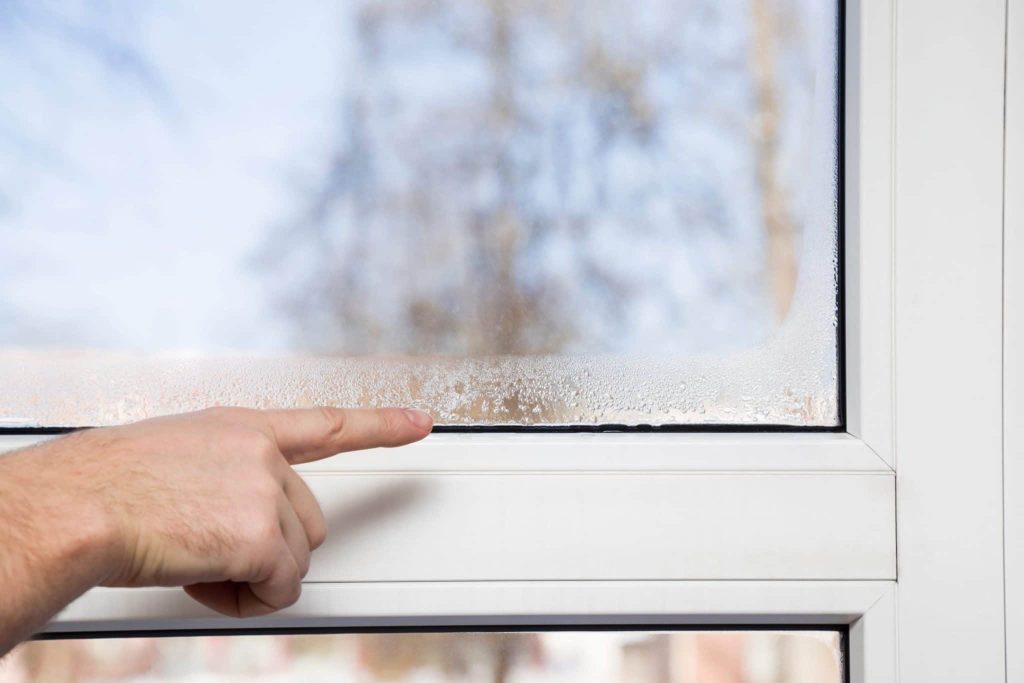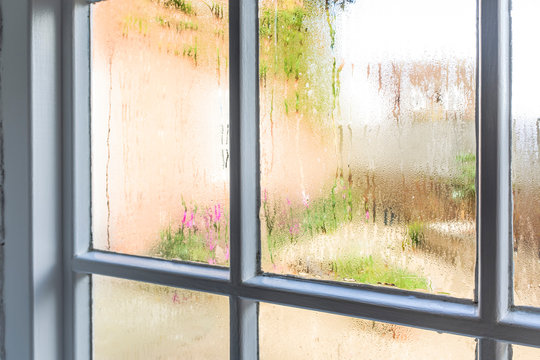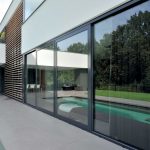Bank Holiday Notice – Our office will be closed on Friday, April 18th for the Easter bank holiday. We will reopen on Tuesday, April 22nd.
Why Condensation on the Outside of Windows is a Sign of High-Performance Glazing
August 28, 2024
As a trade installer, you’ve likely encountered homeowners expressing concern about condensation on the outside of windows, particularly on newly installed units.
While this phenomenon might initially seem problematic, it’s actually a clear indicator of high-performance glazing.
In this comprehensive guide, we’ll explore the science behind external condensation, its relationship to energy-efficient windows, and how you can use this knowledge to educate and reassure your customers.
Why does condensation form on the outside of windows?
Condensation forms on the outside of windows when the glass surface is cooler than the dew point of the air outside. This can occur on well-insulated windows, indicating that the windows are doing a good job of preventing heat transfer from the inside to the outside, thus reducing energy loss.
Before delving into the specifics, it’s essential to understand the fundamental principles behind condensation. Condensation occurs when warm air meets a cold surface, causing water vapour in the air to cool and form water droplets. This process is governed by the dew point – the temperature at which air becomes saturated with moisture and can no longer hold water vapour.
External condensation on windows typically forms during the colder months, particularly in autumn and winter. It’s most noticeable on clear nights when heat radiates away from the earth’s surface, causing the outer pane of glass to become colder than the surrounding air. When the temperature of the glass drops below the dew point, moisture in the air condenses on the cold surface, forming visible droplets.
Why High-Performance Windows Are More Prone to External Condensation

Contrary to what some homeowners might think, condensation on the outside of windows is actually a sign of excellent thermal performance. Here’s why:
- Superior Insulation: Modern double and triple glazing units are designed to minimise heat loss from inside the home. The inner panes of glass remain warm due to the insulating properties of the glazing unit, preventing heat from reaching the outer pane.
- Low-Emissivity (Low-E) Glass: Many high-performance windows incorporate low-emissivity glass, which reflects heat back into the room. This further reduces heat transfer to the outer pane, keeping it colder.
- Airtight Seals: Quality window frames and glazing units feature airtight seals that prevent warm air from leaking between the panes. This lack of air leakage contributes to the temperature difference between the inner and outer panes.
The Role of Double and Triple Glazing
Double and triple glazing units are particularly susceptible to external condensation due to their enhanced insulating properties. The multiple panes of glass, often with inert gas fillings between them, create an effective barrier against heat transfer. As a result, the outer pane of glass can reach temperatures close to or even below the outside air temperature, making it more likely for condensation to form.
Explaining External Condensation to Homeowners

When faced with customer concerns about condensation on the outside of windows, it’s crucial to frame the issue positively. Here are some key points to communicate:
- It’s a Natural Phenomenon: Explain that external condensation is a natural occurrence, much like dew forming on grass in the morning. It’s not a defect in the windows or a sign of poor installation.
- Indicator of Energy Efficiency: Emphasise that the presence of condensation on the outside of windows is actually a sign that their new windows are working effectively to prevent heat loss. This can lead to significant savings on energy bills over time.
- Temporary and Harmless: Reassure homeowners that external condensation is typically a temporary condition that will disappear as the day progresses and temperatures rise. Unlike internal condensation, it poses no risk of water damage, mould, or dampness inside the home.
- Varies with Weather Conditions: Point out that the occurrence of external condensation can vary depending on weather conditions. It’s most likely to form on clear, still nights when there’s high humidity and a significant temperature difference between inside and outside.
Practical Tips for Managing External Condensation
While external condensation is not a problem that needs solving, there are a few strategies that can help minimise its occurrence or speed up its dissipation:
- Improve Air Circulation: Suggest using ceiling fans or opening windows briefly to create a gentle breeze, which can help evaporate the condensation more quickly.
- Adjust Landscaping: If possible, recommend trimming back vegetation near windows to improve air flow and reduce localised humidity levels.
- Consider External Shutters or Awnings: For homeowners particularly concerned about the aesthetic impact, external shutters or awnings can provide some protection against condensation forming.
- Be Patient: Remind customers that as temperatures rise during the day, the condensation will naturally evaporate.
The Bigger Picture: Energy Efficiency and Comfort

When discussing external condensation with homeowners, it’s an excellent opportunity to highlight the broader benefits of their high-performance windows:
- Reduced Energy Bills: The same insulating properties that cause external condensation also result in significant energy savings by reducing heat loss in winter and heat gain in summer.
- Improved Comfort: High-performance glazing helps maintain a more consistent indoor temperature, eliminating cold spots near windows and enhancing overall comfort.
- Noise Reduction: Multi-pane glazing units with quality seals also provide superior sound insulation, creating a quieter indoor environment.
- UV Protection: Many modern glazing units include coatings that help protect furnishings and flooring from UV damage.
Addressing Other Condensation Concerns
While explaining external condensation, it’s worth touching on other types of condensation that homeowners might encounter:
- Internal Condensation: Unlike external condensation, persistent internal condensation can be problematic. Advise homeowners on managing indoor humidity levels through proper ventilation, using extractor fans when cooking or showering, and avoiding drying laundry indoors without adequate ventilation.
- Condensation Between Panes: If condensation appears between the panes of a double or triple glazing unit, this indicates a failure of the airtight seal and requires professional attention.
Partner with Dekko for High-Performance Glazing Solutions
Understanding the science behind condensation on the outside of windows empowers you to address customer concerns confidently and turn a potential complaint into a selling point for high-performance glazing.
At Dekko, we’re committed to supporting our trade partners with not just superior products, but also the knowledge to promote them effectively.
If you’re looking to offer your customers the very best in energy-efficient windows and doors, look no further than Dekko. As a leading uPVC and aluminium fabricator serving trade installers across the UK, we provide a comprehensive range of high-performance window and door systems designed to meet the most demanding energy efficiency standards.
Our product lineup includes state-of-the-art double and triple glazing units, featuring low-emissivity glass and advanced thermal break technologies. Whether you’re working on residential or commercial projects, our range of uPVC and aluminium windows and doors offers the perfect blend of performance, aesthetics, and value.
Don’t let customer concerns about external condensation hold you back. Contact Dekko Window Systems today to learn more about our products and how we can support your business in delivering exceptional fenestration solutions to homeowners across the UK. Together, we can turn every installation into an opportunity to showcase the benefits of high-performance glazing.
Discover More with Dekko
The Installer’s Guide to Solidor Composite Doors
A Complete Guide on How to Install Sliding External Doors
Dekko’s Guide to uPVC Flush Casement Windows for Window Installers










Nationwide delivery in the UK
From our state-of-the-art factory in Lancashire, our products are transported to installers across the UK. We strive to meet all delivery deadlines to ensure our customers are never delayed. They stock an extensive range of PVCu and ancillary products to give installers easy and convenient access to all the necessary hardware.
Contact Us
